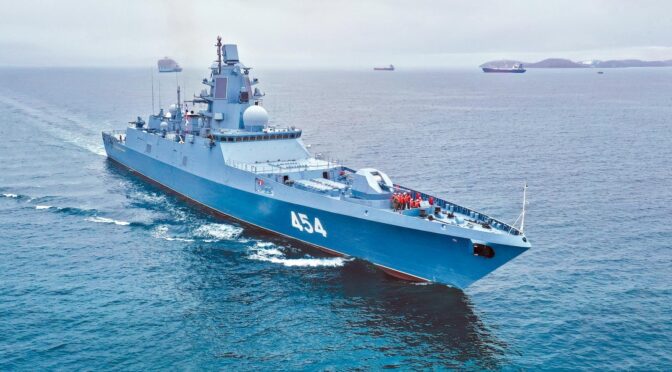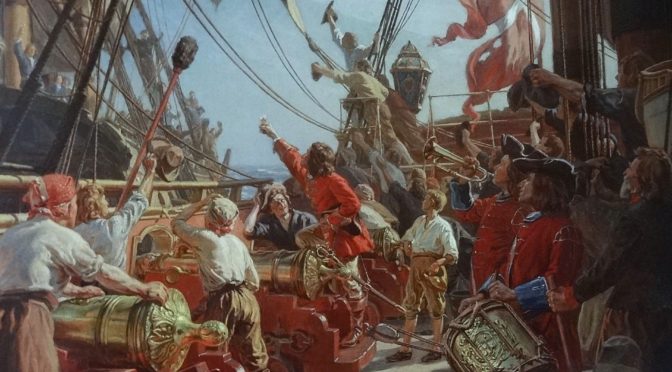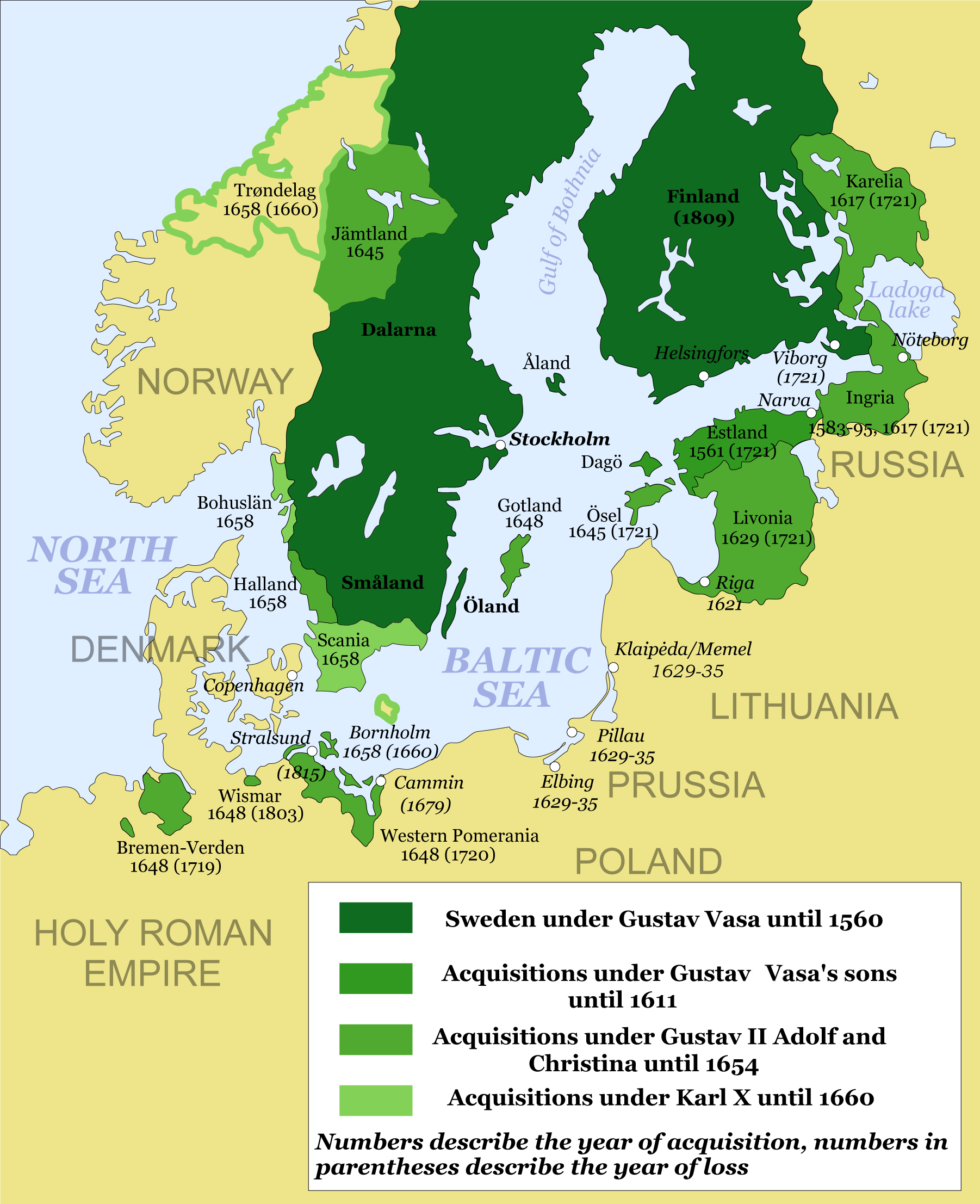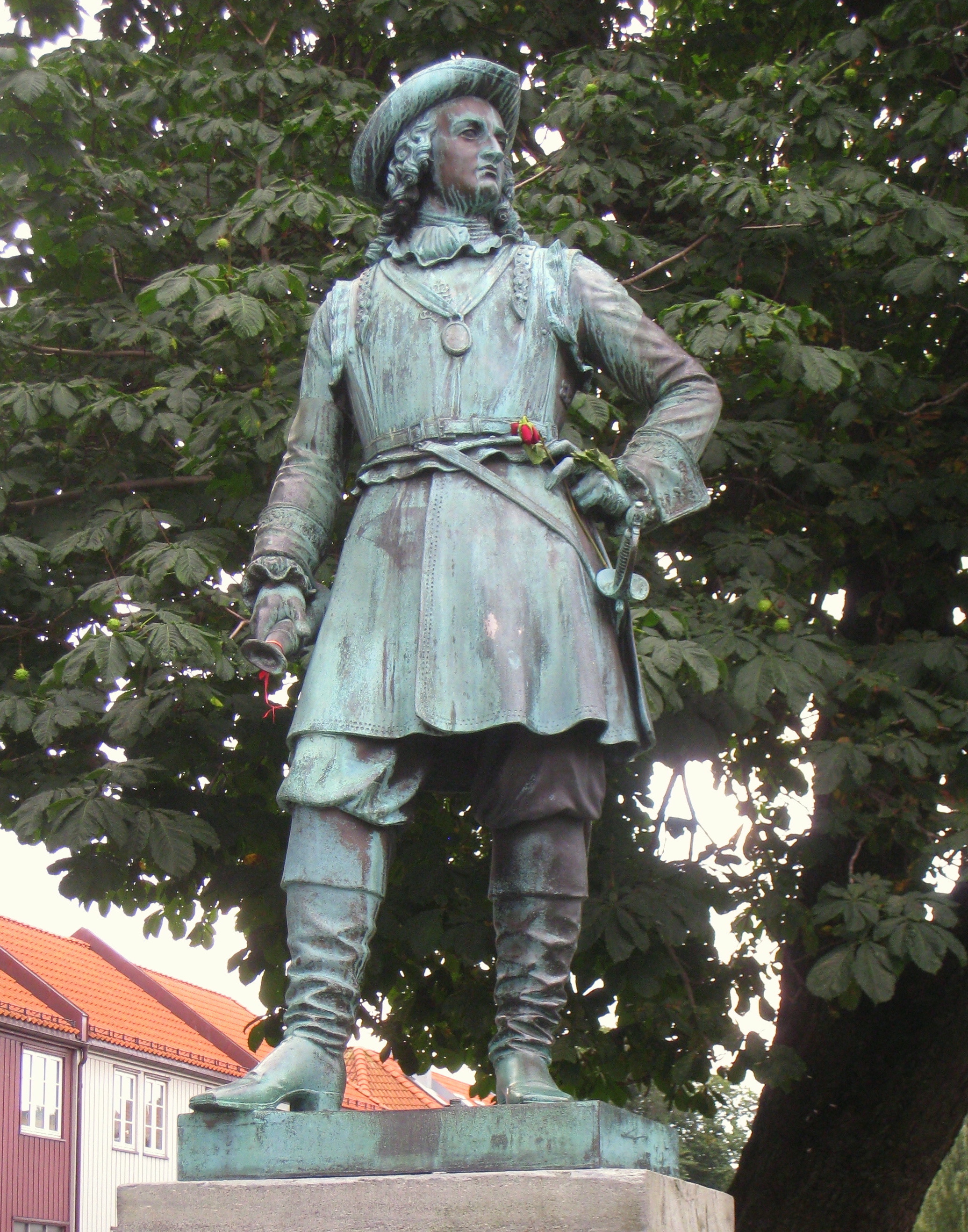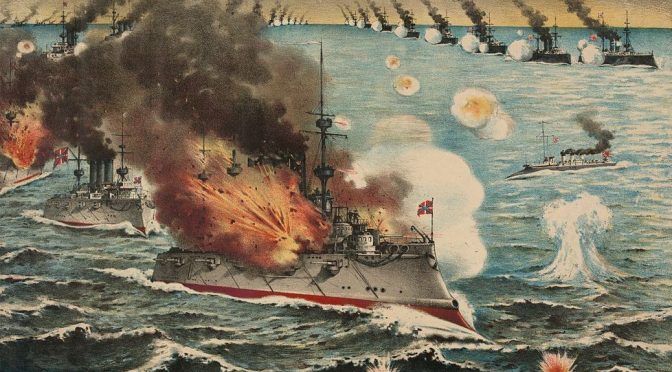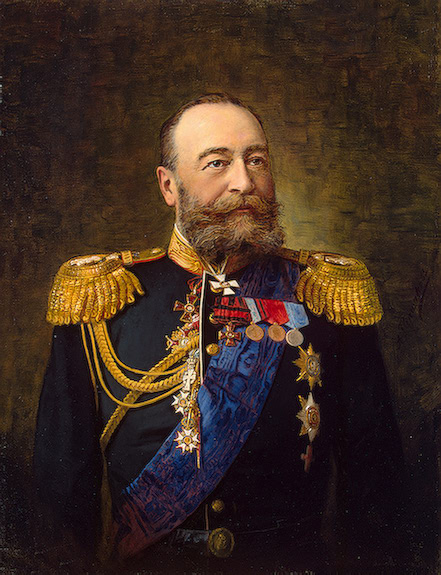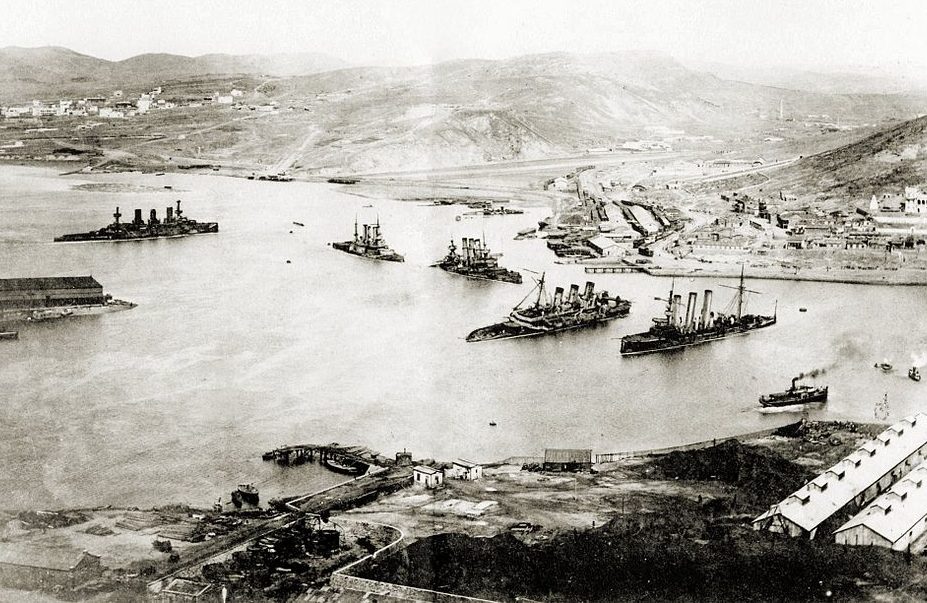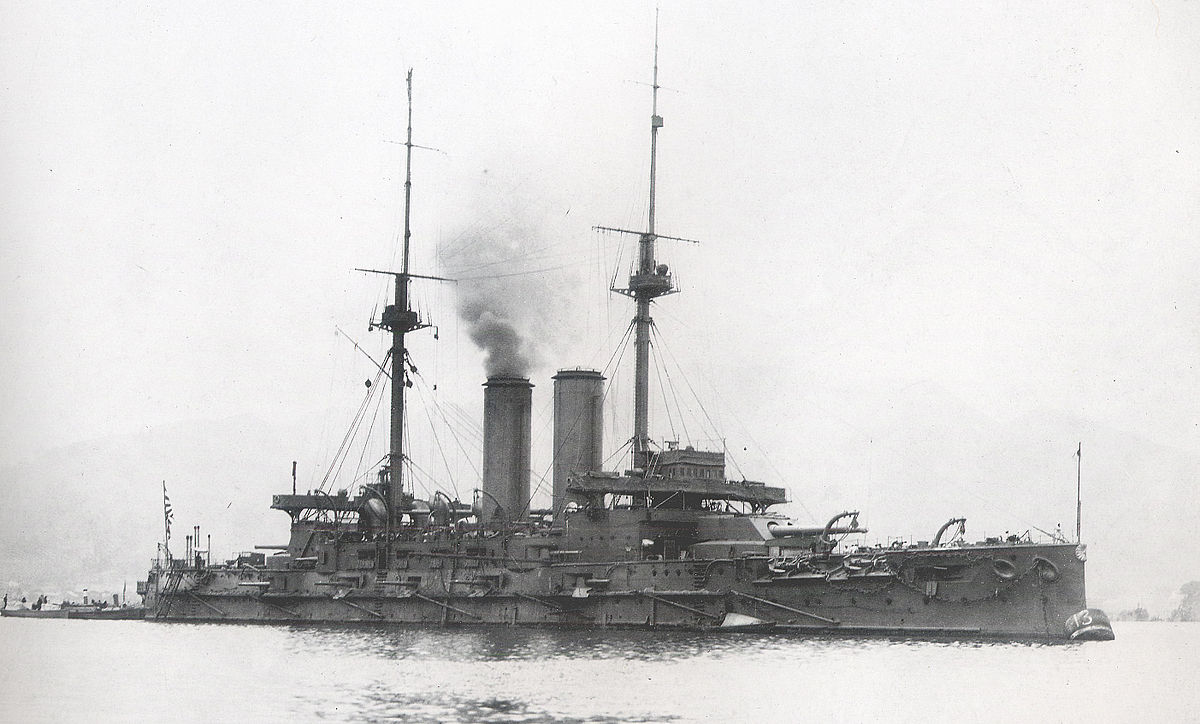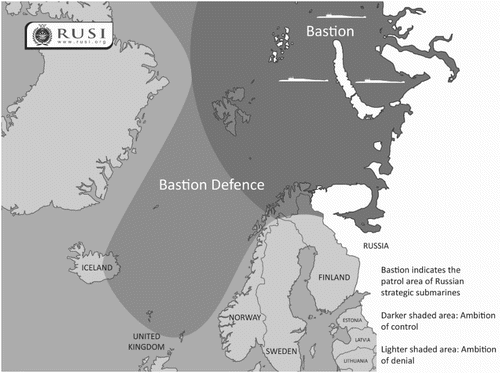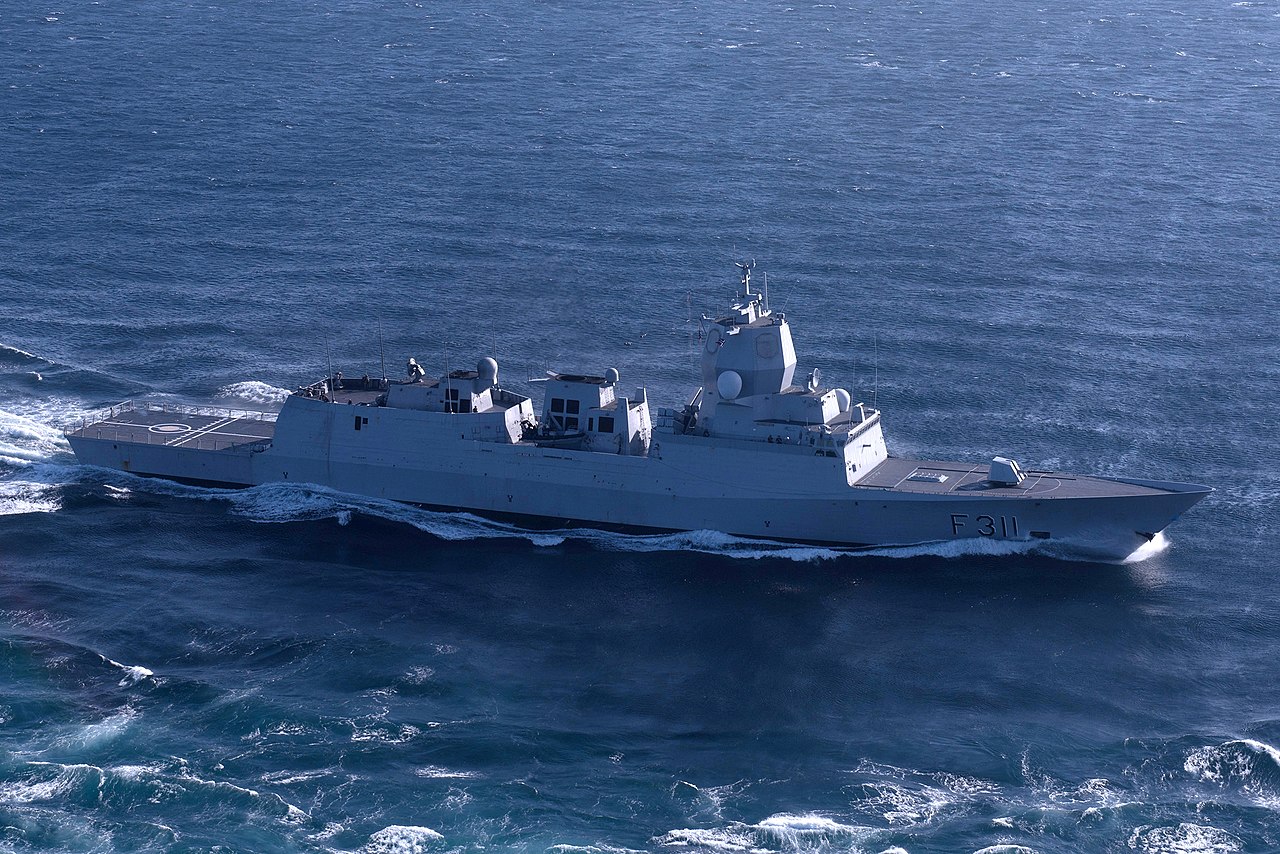By Michael B. Petersen
How might Russian maritime forces be brought to bear against the United States and its allies? This question is particularly critical as fears of inadvertent escalation in Ukraine increase. Understanding the answer requires a close reading of what Russian military theorists themselves write about warfare, matched with an examination of maritime geography; combat power; and intelligence, surveillance, reconnaissance, and targeting (ISR-T). Constraints in all of these areas mean that rather than solely seeking out targets at sea for a series of navy-on-navy fights, Russian maritime forces are likely to be more effective at operations that focus on striking “critical objects” on land rather than ship-to-ship combat at sea.
Many analyses of Russian naval warfare focus on the concept of anti-access/area denial (A2/AD). These valuable studies nevertheless do not discuss Russia’s ability to fight at the theater level. A broader assessment at this level is necessary in light of renewed suggestions that Russia may seek to close the Greenland-Iceland-United Kingdom (GIUK) Gap or English Channel, or engage in a “Fourth Battle of the Atlantic” over sea lines of communication.
The Russian Federation Navy’s Wartime Tasks
Understanding the navy’s role first requires a basic grasp of Russian conflict periodization. The two most critical periods in Russian military thought are the “Threatening Period” (“Ugrozhayemyy Period,”) and the “Initial Period of War” (“Nachal’nyy Period Voiny”). In contemporary Russian military philosophy, the Threatening Period is generally characterized as a short, sharp crisis potentially leading to war, while the Initial Period is characterized by decisive, rapid, joint, military, political, and cyber operations designed to achieve primary objectives or enable follow-on operations.
The Ministry of Defense has assigned several tasks to the Russian Navy in the Threatening Period. They include
- rapid mobilization and transition to wartime footing as part of a strategic deterrence mission
- Isolation of local conflicts and preventing them from growing into a regional war
- Protection of Russian economic interests and freedom of navigation at sea
Given the Russian General Staff’s philosophical emphasis on preemptive operations, the Navy is also required to be able to rapidly shift to offensive and defensive combat operations when ordered. This is generally considered the start of the Initial Period of War.
In the last decade, Russian naval thinkers have emphasized the importance of land attack against critically important targets (or “objects”), especially in the Initial Period. Its official doctrine notes that one of its roles is “to attack the critically important ground-based facilities of the adversary, without violating, until a certain moment, its national sovereignty.” A crucial wartime objective is “destruction of enemy’s military and economic potential by striking its vital facilities from the sea.” This is a concept known in some circles as “the fleet against the shore.”
This is not to minimize the more traditional need to destroy naval targets at sea. For example, an influential article in the General Staff’s journal Military Thought highlights attacks against “maritime carriers that are the global strike assets” and “maritime components of the U.S. national [missile defense] system”). Thus a combination of strikes against critical targets afloat and ashore are at the core of a naval cost imposition strategy.
Indeed, despite the West’s analytic emphasis on A2/AD, Russian naval warfighting philosophy does not focus exclusively on sea control or denial. Instead, it emphasizes cost imposition ashore and afloat via strikes against targets selected for their critical strategic value. Russian naval strategists blend both, attempting to both limit damage and impose cost.
The Tyranny of Geography
While geography offers Russia certain advantages in the littorals and so-called “Near Seas” (a term rarely defined, but generally understood as laying up to 300 nautical miles off shore), as a factor in warfighting against distant targets, geography presents Russian forces with significant challenges. The long-standing geographical concept of a “loss of strength gradient” is useful here. This is a unit of competitive power that is lost per some unit of distance from home shores. In short, relative military strength changes with distance. In Russia’s maritime domain, this loss of strength gradient is particularly relevant at the operational level of war because of capacity limitations and the broad failure to secure overseas alliances or bases.
Russian warfighting in its littoral and Near Sea regions is based around a densely layered and redundant network of land-based sensors, jammers, decoys, land-based missiles, and tactical fighters. As it moves into the Far Sea zone and distant “World Ocean,” (both roughly over 300-400nm from Russia) the military’s loss of strength gradient begins to take hold as the potential volume of contested geographic space increases and available sensors decrease. Larger areas require higher-volume over-the-horizon search capabilities coupled with large numbers of survivable oceangoing warships. Both are in limited supply in the Russian Navy.
Moscow has successfully built lines of smaller and less complex naval platforms that are expected to defend its near seas in conjunction with shore-based assets. The smaller size of these ships limits their range and survivability, confining their anti-ship capabilities to local waters. But many are nevertheless equipped with the Kalibr land-attack cruise missile, capable of performing a theater strike role against targets ashore nearly 1,000 miles away.
Larger platforms, especially large surface combatants and nuclear-powered submarines based in the Northern and Pacific Fleets, have greater range and survivability. In the near term, however, they suffer from severe order of battle constraints. If Moscow draws off SSNs to defend its strategic nuclear ballistic missile submarines, then the navy’s fighting strength in the Far Sea and World Ocean is may be limited to three to five submarines in the North Atlantic, for example (an area comprising some 6.4 million square miles), and two or three in the vast Pacific.
Over-the-Horizon ISR
Over-the-horizon (OTH) ISR, an essential element of open-ocean warfare, is perhaps Russia’s most critical maritime warfighting challenge. Its maritime joint combat force has developed extraordinary long-range anti-ship missiles, but they cannot kill what they cannot find. In order to exploit that range, the volume of required search space has exploded. OTH sensors capable of transmitting target-quality data to shooting platforms have lagged behind this need.
Russian shore-based sensors have impressive capability out to a few hundred miles — the Near Sea Zone — but are inadequate for open-ocean targeting. To overcome this, Moscow has constructed a new family of electronic intelligence satellites. The “Liana” system of satellites collects electronic signals emitted by adversary naval vessels and transmits that information to Russian warships equipped with the proper satellite communications equipment. According to open sources, only one Pion-NKS satellite and three Lotos-S satellites are currently operational. Publicly available satellite tracking websites indicate that there may be considerable coverage gaps.
Long-range maritime patrol and reconnaissance aircraft such as the Tu-142 Bear-F and Il-38 May must fill these gaps. But Russia lacks forward basing, fighter aircraft with similar range, and carrier-based fighter aircraft, making long-range escort of these missions impossible. Unless they are willing to assume extraordinary levels of risk, unarmed reconnaissance aircraft must stay within easy reach of Russian fighter patrols or land-based SAM coverage for their own protection, limiting the ocean area they can safely cover.
Sensors aboard warships and submarines also have critical limitations. For submarines, only under certain conditions will sonar detections of surface vessels be possible out to a few dozen miles. Surface platforms can have much greater detection ranges, but lack the endurance and survivability of nuclear-powered submarines. Ship-based ISR presents an ever-increasing risk as it patrols farther away from shore-based air defense. Finally, as Russian analysts themselves acknowledge, even the most advanced systems are not foolproof against sophisticated adversaries.
Imagining Russian Warfare at Sea
How might these dynamics manifest themselves in a high-intensity, regional or large-scale war in the next two to three years? Combining these military concepts at the operational and strategic level of war with Russian strengths and limitations, and pitting them against a sophisticated adversary such as the United States and NATO, it is possible to gain a sense of the broad contours of such a conflict.
During the Threatening Period, the Russian Navy is likely to begin dispersing to assigned patrol areas in the littorals, Near Sea, and Far Sea zones in an effort at crisis deterrence. Ashore, theatre-level Aerospace Defense Forces deployed along maritime frontiers will be brought up to higher states of readiness and possibly deployed from garrisons. The goal of all of these forces would be to threaten “deterrent” or unacceptable damage to the potential adversary.
Given the General Staff’s sensitivities to correlations of forces over time and its emphasis on preemptive warfare, Moscow may initiate hostilities if it believes that deterrence is failing. Rapid, decisive strategic aerospace operations, or strategic operations for the destruction of critically important targets (SODCIT), are key elements of potential campaigns in the Initial Period. Yasen and Yasen-M SSGNs are especially crucial in this regard, and may be required to attack military-industrial facilities, headquarters, and C2 nodes. Importantly, with only two or three potential submarines in this class in the near term, order of battle shortfalls place limitations on Russia’s ability to execute this mission, but given targeting limitations against naval targets, land attack is a key area of emphasis.
The navy will likely comprise one component of a larger effort to achieve local superiority during this period. For example, in a hypothetical conflict in Europe or East Asia, the Initial Period may be characterized by an intense campaign against targets in places such as Norway, Romania, and Poland in Europe, and perhaps in Japan in East Asia. This campaign may form part of a larger effort to conduct theater-wide attacks on strategic targets with precision standoff weapons. Put another way, Russia may attempt to “expand” its adversary’s relative geography by pushing its opponents out of bases closer to Russia, forcing a more costly application of resources, while a nation like the U.S. may attempt to “shrink” its own by using standoff strike in order to bring follow-on military power forward.
Russian Long Range Aviation (LRA) bombers firing long-range precision-guided munitions from sanctuary may be more dangerous than the navy’s limited number of cruise-missile shooting submarines and their relatively small potential salvo size. Nevertheless, modern Kalibr-capable vessels should not be dismissed. Even if “bottled up” in their home waters in the Barents, Baltic, or Black Seas, smaller vessels can still strike most of northern, central, and eastern Europe. These attacks can have a decisive political effect on the course of a conflict.
Moving, uncooperative adversary naval targets are a far more difficult targeting problem. Large naval platforms in the Northern and Pacific Fleets, dispersed in the Threatening Period, may attempt to overcome open-ocean ISR shortcomings by lying in wait near maritime choke points. Though limited in number, nuclear-powered submarines play a crucial role in both offensive cost imposition and defensive damage limitation by seeking out these vessels before they get into striking range of Russian shores.
This is where the geographic loss of power gradient may affect Russia’s adversaries. If Russia can successfully eliminate forward air basing, the U.S and its partners must invest greater resources to move large amounts of combat strength forward. If the U.S. Navy must come forward, the searchable volume of ocean shrinks proportionately. Surface ships, including carrier strike groups, could be exposed to attacks from strike aircraft, other surface ships, and any submarines that may be lying in wait. Counter-ISR-T and operational maneuver techniques are likely to be the difference between life and death. Given these conditions, it is possible that the relative power gradient may rebalance if a U.S. carrier strike group or other platforms come forward.
This stage of warfare may be where Russia can impose the most cost. Large Russian surface combatants will provide air defense and surface strike while smaller frigates and corvettes, many equipped with Kalibr anti-ship cruise missiles, will conduct anti-surface warfare. But given limitations in numbers of missiles on board and the absence of at-sea reloads, an equal contributor in the effort to dole out punishment on any adversary naval forces that come forward will be made by land-based strike aircraft supported by tactical fighters and shore-based missile systems.
Implications for Analysis and Planning
This analysis has several implications. First, arguments about threats to Trans-Atlantic SLOCs require much greater analytic clarity because they run the risk of warping strategic realities. Given Russian capacity and OTH ISR challenges, it seems likely that points of embarkation and debarkation — the ends of the SLOCs, not the vast middle of the SLOCs — are at risk, primarily because it is comparatively easier to destroy a ship in port than it is to do so at sea. The circumstances of geography and the state of their own military modernization would likely drive Russian naval forces in this direction.
The majority of Russian naval effort would likely be dedicated to inflicting carefully dosed conventional damage effects in an effort to disorganize responses, interrupt logistics flows at fixed points, and generally impose “deterrent” or “unacceptable” damage that coerces an adversary to sue for peace on terms favorable to Russia. Thus, the bulk of offensive activity is likely to be on landward, fixed targets as part of a joint campaign aimed at cost imposition. Long-range precision guided munitions may be used either from the sanctuary of distant bastions or from the far seas. Russian joint assets are less likely to dedicate the lion’s share of resources for long and frustrating hunting missions for moving targets in a very large ocean. Such attacks, while possible, are far more ISR-intensive and tactically complex.
Concerns about Russia’s purported ability to threaten targets south of the Greenland-Iceland-United Kingdom Gap (GIUK Gap) are probably inflated. While Russia may technically be able to close the GIUK Gap or even the English Channel for a time, the likelihood of such an attempt is low. Rather, Russian warfighting strategy is partially shaped by its need to minimize its asymmetric disadvantages in warship capacity and ISR. In short, Russia still lacks the open-ocean capacity necessary to meaningfully overcome the geographic loss of strength gradient and successfully conduct ship-to-ship fighting in the central Atlantic at a scale to defeat the United States and NATO.
Even so, this analysis also suggests that the U.S. and NATO should not ignore investments in key future capabilities. Continued development in ISR and counter-ISR capabilities will remain essential. But counter-ISR will be no guarantee against attack. As Russia fields more advanced sensors to feed combat platforms equipped with new hypersonic anti-ship missiles, avoiding detection and shooting down inbound missiles will become ever more difficult, requiring more investments in so-called “soft-kill” technologies that seduce missiles to strike false targets. In addition, if Russia is able to successfully expand the maritime geography, U.S. and NATO partners are likely to require greater investments in aerial refueling to ensure that tactical combat aircraft are able to transit and fight at long distance.
Finally, it is worth remembering that any wartime adversary of Russia gets a vote. Too much of what passes for analysis of the Russian military, particularly its maritime warfighting capabilities, is carried out in the absence of what a sophisticated adversary may do with its own force. War is a dynamic interaction. Moscow’s potential opponents have effective and powerful militaries of their own, and are developing sophisticated concepts to deter or defeat Russia. Any clear-headed assessment of Russian maritime warfighting must take both perspectives into account.
Dr. Michael Petersen is director of the Russia Maritime Studies Institute and Holloway Advanced Research Program at the U.S. Naval War College. The opinions here are solely the author’s and do not represent those of the U.S. Navy or Department of Defense.
Featured Image: Russian Navy Admiral Gorshkov-class frigate Admiral Gorshkov. (Alamy photo)

